ActiveOutdoorsOuterwearIs Gore-Tex ePE the future of sustainable waterproof technology? We asked a fabric expertDoes the evolution of Gore-Tex’s ePE membrane mean we can buy guilt-free gear again?When you purchase through links on our site, we may earn an affiliate commission.Here’s how it works.
ActiveOutdoorsOuterwearIs Gore-Tex ePE the future of sustainable waterproof technology? We asked a fabric expertDoes the evolution of Gore-Tex’s ePE membrane mean we can buy guilt-free gear again?When you purchase through links on our site, we may earn an affiliate commission.Here’s how it works.
Does the evolution of Gore-Tex’s ePE membrane mean we can buy guilt-free gear again?
When you purchase through links on our site, we may earn an affiliate commission.Here’s how it works.
(Image credit: GORE-TEX)

(Image credit: GORE-TEX)
Jump to category:Is Gore-Tex bad for the environment?What’s the differenceDoes ePE work?What’s the impact?Should you buy?
Jump to category:Is Gore-Tex bad for the environment?What’s the differenceDoes ePE work?What’s the impact?Should you buy?
Achim Ewers zum Rode - Gore’s Global Brand and Consumer Strategy Leader, walks and talks us through the wall of fame(Image credit: Pat Knsella)

Achim Ewers zum Rode - Gore’s Global Brand and Consumer Strategy Leader, walks and talks us through the wall of fame
Achim Ewers zum Rode - Gore’s Global Brand and Consumer Strategy Leader, walks and talks us through the wall of fame
(Image credit: Pat Knsella)
Used in everything from thebest lightweight waterproof jacketsandcold-weather glovesto high-endhiking bootsandwalking shoes, Gore-Tex has been synonymous with adventure for decades.
I’ve stood on the very rooftop of a couple of continents completely cocooned in Gore-Tex gear, quite literally from my fingertips to my toes, and without it, I may well have left some of those digits up there.
A new Gore-Tex jacket being waterboarded in the rain room(Image credit: Pat Kinsella)

A new Gore-Tex jacket being waterboarded in the rain room
A new Gore-Tex jacket being waterboarded in the rain room
(Image credit: Pat Kinsella)
But the reason I’m here, being shown around the Gore-Tex mothership and meeting some of the people responsible for future-proofing the company, is because the production and proliferation of such pricey high-performance gear has also come at an environmental cost.
Recently, however – after years of research, testing and development – Gore has succeeded in reinventing their membrane, and now they really want to tell the outdoor world all about ePE, which they say is more environmentally friendly and will ultimately replace the old ePTFE-based technology.
Sign up to the T3 newsletter for smarter living straight to your inbox
Get all the latest news, reviews, deals and buying guides on gorgeous tech, home and active products from the T3 experts
Is Gore-Tex bad for the environment?
(Image credit: GORE-TEX)

(Image credit: GORE-TEX)
In order to make the windproof, waterproof and breathable garments (WWBs) we all demand, Gore’s all-important membrane is invariably wrapped in a laminate with synthetic materials (essentially plastic, a product of the fossil fuel industry that will never, ever biodegrade).
Plus, the composition and production of the membrane itself has – until now – involved the use of Polytetrafluoroethylene (PTFE), and then the clothing is treated in a durable water repellent (DWR) finish that has, until recently, featured damaging ‘forever chemicals’ like perfluorocarbons (PFCs).
For decades the performance of Gore-Tex gear has been based on the properties of an ePTFE membrane, which is covered in extremely tiny holes – so small they won’t let water molecules or wind through but will let vapour out, which is how it manages to be both windproof, waterproof and breathable (at least in the right conditions, but more of that later).
PTFE is an inert fluoropolymer that doesn’t break down or degrade, andaccording to Gore(and an independent textile expert I later consulted), is not a PFC of environmental concern – although some chemists take a different view, reasoning that the jury is still out. It also increases the durability – and therefore useful lifespan – of a garment, which lowers its environmental footprint (so long as people are not tempted and lured into repeatedly buying new gear before their old kit has really died).
The spray test(Image credit: Pat Kinsella)

The spray test
The spray test
(Image credit: Pat Kinsella)
Nevertheless, questions remain about what happens to the PTFEs during disposal (even if you try and do the right thing, textile sorters currently separate out the outdoor garments which might have a DWR on them and do not send these into the textile-to-textile recycling system for fear of contamination – instead they get sent overseas and might be burned or dumped).
Also, the process of creating all those tiny holes in the microporous membrane that allows the magic to happen is done with the use of fluorines, which are being banned because they’re awful for the environment. Gore stood to lose its Bluesign badging when the PFC ban came in unless the company discontinued its use of PFCs in their manufacturing process.
Of course, the outdoor apparel industry is not the only sector guilty of using such chemicals and materials – PTFE is used in everything from plumber’s tape to medical equipment – and Gore is far from the only company involved (everybrand producing microporous waterproof and breathable gear is in the same boat).
So there are lots of pressures at play, but there’s also a sense of earnestness around the Gore-Tex team tasked with making their product more planet-friendly, and this is very clearly evident in the people who proudly present their new and evolving product to us.
How does ePE differ to the ‘old’ Gore-Tex stuff?
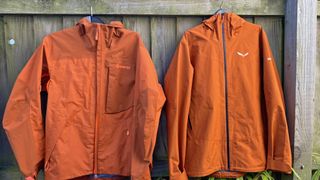
(Image credit: Pat Kinsella)
This is touted as the major change (and itisa big deal for Gore, who has devoted a lot of time to developing it), but arguably it’s the stripping out of PFCs from DWR treatments that’s far more consequential since these ‘forever chemicals’ come off during use, they’re bioaccumulative and do not break down in the environment, and they’re cancer-inducing.
Does ePE work?
The Crumpleflexer tortures the material to simulate repeated use(Image credit: Pat Kinsella)

The Crumpleflexer tortures the material to simulate repeated use
The Crumpleflexer tortures the material to simulate repeated use
(Image credit: Pat Kinsella)
Leaving the lab, we cross the border into Austria and spend an entire dayclimbing via ferrataroutes on the flanks of Harauer Spitze in the Chiemgaur Alpen, clad in prototype Gore-Tex jackets made with the new ePE tech (and constructed from recycled materials).
Here, high in the Austrian mountains, where the nearest seaside is Venice, 500km away, the air humidity is low and so a microporous membrane like Gore-Tex works brilliantly in terms of breathability. (This isn’t always the case, but that’s another topic.)
What impact might ePE have on the outdoor industry?
(Image credit: GORE-TEX)

(Image credit: GORE-TEX)
The presentations, demonstrations and testing experiences are all very compelling, but while I’m an enthusiastic and experienced outdoorsy type, and I know what technology works best in particular terrain types, I’m far from an environmental scientist or – more to the point – a textile expert. So once home, I spoke to someone who is, to get their informed take on ePE and what it means for the outdoor industry.
Charles Ross is a university lecturer at the Royal College of Art and works closely with Leeds University. He is the subject lead in Performance Sportswear Design, and many of his former students now work with brands like Mountain Equipment, Montane, Rab, The North Face, Patagonia and Arc’teryx – one is actually on the Gore-Tex team. Inside and outside of work, he’s a self-confessed textile geek. And so, of course, he has been taking a keen interest in the development of ePE, and the claims that it’s more environmentally friendly.
Marie Mawe, Sustainability Stakeholder Engagement Director, Gore Fabrics Division, present the unarguable case for durable gear being better for the planet(Image credit: Pat Kinsella)

Marie Mawe, Sustainability Stakeholder Engagement Director, Gore Fabrics Division, present the unarguable case for durable gear being better for the planet
Marie Mawe, Sustainability Stakeholder Engagement Director, Gore Fabrics Division, present the unarguable case for durable gear being better for the planet
(Image credit: Pat Kinsella)
“There’s no real change in the membrane in sustainability terms,” Charles tells me. “Because, although the previous version was made with PTFE, the material itself was inert and did not leach out chemicals. However, the construction method is definitely better, as PFCs are not used.”
In terms of performance, Charles says: “The new membrane is very comparable to the Gore-Tex of old, but not the highest permeability product – think more classic Gore-Tex rather than Gore-Tex Pro. I do expect the new (poly)Olefin membrane to have improved permeability in years to come, however. Now they have a stable membrane, Gore will concentrate on getting better breathability figures.”
However, he cautions that better breathability stats are often arrived at via the production of a thinner fabric, which won’t last as long. “There’s always a compromise,” Charles chuckles. A truly magic material that is both genuinely waterproof and highly breathable doesn’t exist.
Should you buy ePE apparel?
(Image credit: GORE-TEX)

(Image credit: GORE-TEX)
“I define sustainability as the gear you use for the longest – the lowest impact kit is the stuff you already own,” Charles concludes. “So if you have an ePTFE Gore-Tex jacket with a PFC DWR, keep using it; anything you replace it with will be additional footprints.”
However, saluting Gore’s contribution to the development of outdoor gear, Charles tells me: “They have advanced the market and the consumer’s expectations brilliantly. Without Gore, the whole user experience would not be as good.”
He likens the evolution of Gore-Tex (and windproof, waterproof and breathable apparel in general) to a journey and sees the development of ePE as a positive turn of direction along the way. So, if you are investing in new gear because your old kit has genuinely died, then it makes sense to go with equipment made without the use of environmentally damaging chemicals – but don’t go binning it and buying more just because it looks a bit stained.
And treat it with respect; technical clothing like Gore-Tex can only be used a certain amount of times before the laminate fails – save it for when you really need it, and you’ll get years of exciting use out of it, which is better for your pocket and the planet.
And so the journey continues. With slightly lighter footsteps.

Samsung Galaxy S25: every leak, rumour and spec we’ve heard before the launch eventThis is everything we’ve heard about the new handsets
This is everything we’ve heard about the new handsets

This case turns your iPhone or Android phone into an e-reader, but there’s a catchActually, there are a couple…
Actually, there are a couple…

Columbia Wyldwood Waterproof Hiking Shell review: the most waterproof (and shiny) jacket I’ve ever wornIt might not have the matt finish most people expect from a jacket, but the Wyldwood really shines when it comes to protecting you from wet and windy weather
It might not have the matt finish most people expect from a jacket, but the Wyldwood really shines when it comes to protecting you from wet and windy weather
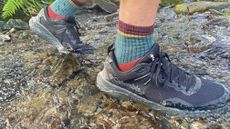
Columbia Konos TRS OutDry Hiking Shoe review: three-season trail trampers with a twistConstructed with Columbia’s innovative OutDry technology, these hiking hoofs repel water very differently to bog-standard walking boots and trekking shoes
Constructed with Columbia’s innovative OutDry technology, these hiking hoofs repel water very differently to bog-standard walking boots and trekking shoes

How to clean your hiking boots in five simple stepsSo they’re ready for your next adventure!
So they’re ready for your next adventure!

No stupid questions: do I need waterproof hiking boots?An outdoor expert weighs in on the difference between waterproof hiking boot and non-waterproof, to help you make the right decision
An outdoor expert weighs in on the difference between waterproof hiking boot and non-waterproof, to help you make the right decision
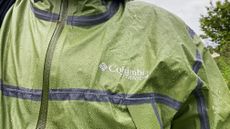
Is Columbia’s OutDry Extreme the best waterproof-breathable material that no one is using?ODX hasn’t revolutionised the outdoor apparel world in the way its creators expected it to – but that could be about to change…
ODX hasn’t revolutionised the outdoor apparel world in the way its creators expected it to – but that could be about to change…
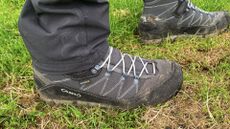
Aku Trekker Lite III GTX review: the little black dress of hiking bootsThe super comfortable, high-performing Aku Trekker Lite III GTX is a go-to winner for all kinds of hiking and backpacking
The super comfortable, high-performing Aku Trekker Lite III GTX is a go-to winner for all kinds of hiking and backpacking
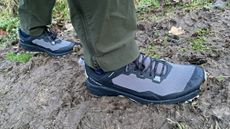
Berghaus Revolute Active Shoe review: trail-tackling waterproof walking shoesRobustly built from recycled materials to a decent design, the waterproof Revolute Active is a workhorse of a walking shoe
Robustly built from recycled materials to a decent design, the waterproof Revolute Active is a workhorse of a walking shoe

Patagonia Storm Racer Jacket 2024 review: light as a featherPatagonia revised its trail running jacket for the new season – how good is it?
Patagonia revised its trail running jacket for the new season – how good is it?